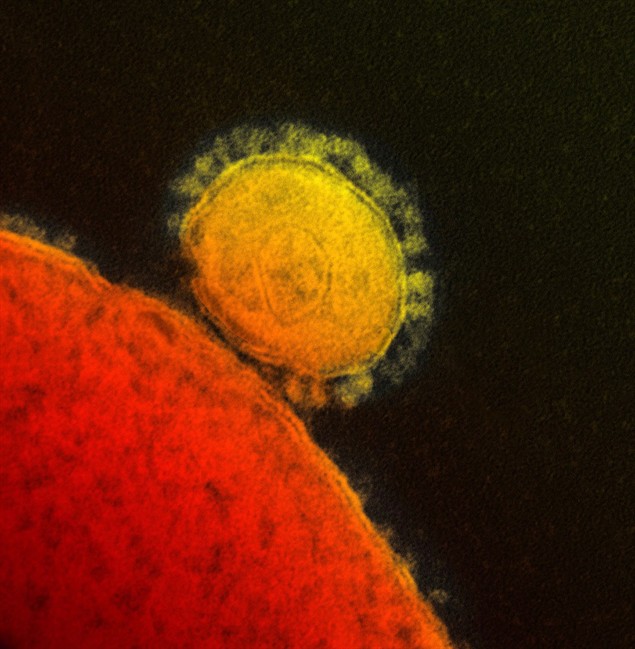TORONTO – Canada’s National Microbiology Laboratory in Winnipeg has a sample of the new coronavirus that is causing infections in a number of countries, most notably Saudi Arabia.

Scientific director Dr. Frank Plummer says the lab obtained the virus from the Erasmus Medical Centre in Rotterdam, the Netherlands.
The Dutch lab was the one that first identified the new virus last June in a sample from a Saudi man who had died of a mysterious illness.
Plummer says the coronavirus arrived at the Winnipeg facility on May 4.
He says the lab is growing up stocks of the virus and will use it to assess diagnostic tests being used in Canada.
As well Winnipeg scientists plan to do some work to see which animal species can be infected with the new virus.
That research will be done in conjunction with the Canadian Food Inspection Agency’s national lab, the National Centre for Foreign Animal Diseases. The animal lab is housed in the same complex as the National Microbiology Laboratory.
The Winnipeg lab made diagnostic tests months ago, based on genetic sequence data of the new virus. Those tests have been in the hands of provincial labs since last fall, Plummer says.
To date about a handful of people have been tested for the infection in Canada, but all the tests have come back negative.
- Health task force blasted over ‘dangerous guidance’ for cancer screenings
- Dentists hesitant to sign up for federal dental plan; seniors advised to look at all options
- Preventing future pandemics goal of new U.S. partnership with 50 countries
- David Chang’s Momofuku to stop ‘chile crunch’ trademark battle after outcry
But having the actual virus to work with will allow the Winnipeg scientists to start developing a blood test to look for past infection with the virus, Plummer says.
“Having the actual virus … allows you to develop antibody tests which are pretty key for a diagnosis of viral infections,” he says.
“The virus is only there for a short period of time so you can’t really tell whether somebody had a past infection or not whereas antibodies allow you to do that.”
New confirmed cases of the virus have been emerging almost daily from what appears to be a large and potentially ongoing outbreak in eastern Saudi Arabia, near the Persian Gulf.
That outbreak reportedly started in a hospital, but it’s not clear at this point whether all the cases are linked to the hospital anymore or whether some spread in the community is occurring.
The information released by Saudi officials has been sparse and generally has not indicated whether the cases are members of the same family – which might suggest limited human-to-human spread – or unrelated individuals. The latter pattern of infections might suggest the virus is spreading more easily among people.
Plummer says the situation is concerning, though he noted he is always worried when a new virus begins to infect people.
“There are certainly a lot of questions about this virus,” he said.
“And because the information coming out has been a little bit … hazy, it’s really hard to know what actually has been done and what’s known.”
On Tuesday the Saudi Ministry of Health reported it has confirmed infections in two health-care workers – identified by some news outlets as nurses.
This is the first time they have acknowledged spread of the virus to health-care workers and it is an unsettling sign. With an outbreak underway, hospitals should be requiring staff coming in contact with possible cases to use what are called barrier precautions – gloves, gowns, respirators to protect the nose and mouth, and goggles to protect the eyes.
During the 2003 SARS outbreak, the virus got a real foothold in hospitals, spreading among health-care workers and their patients.
Experts who have been watching this new virus – which is a member of the same family as the SARS coronavirus – have been worrying this SARS cousin will follow the same path.
With those two additional cases, the global case count rises to 40, with at least 20 deaths. Most of those cases have occurred in Saudi Arabia, though Jordan, Qatar and the United Arab Emirates have also reported cases. France, Britain and Germany have had imported infections and in the case of Britain and France. secondary spread from the imported cases.
To date Saudi Arabia has confirmed 31 cases (including the traveller from Britain) with at least 15 deaths.


Comments